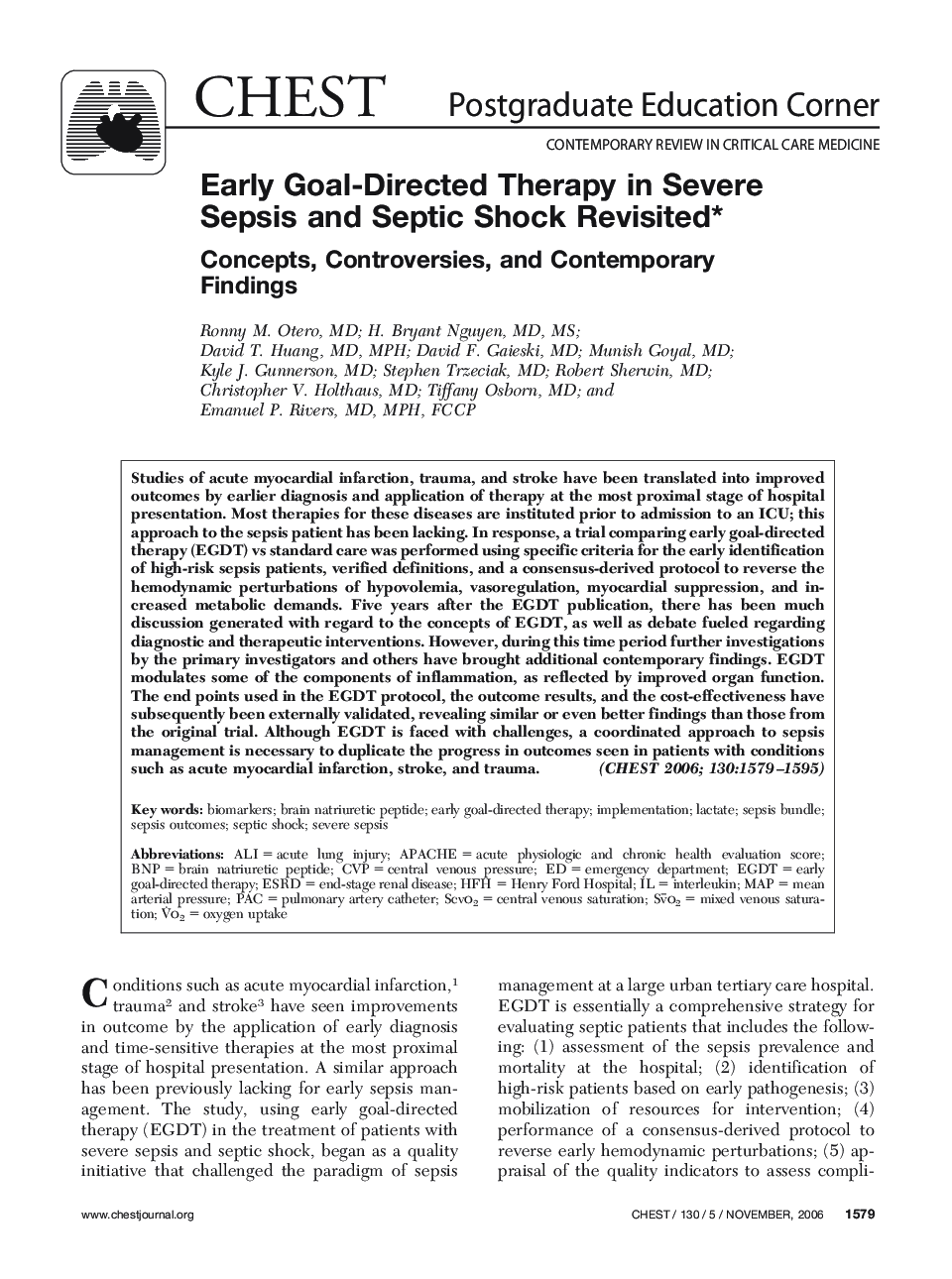| Article ID | Journal | Published Year | Pages | File Type |
|---|---|---|---|---|
| 2905486 | Chest | 2006 | 17 Pages |
Studies of acute myocardial infarction, trauma, and stroke have been translated into improved outcomes by earlier diagnosis and application of therapy at the most proximal stage of hospital presentation. Most therapies for these diseases are instituted prior to admission to an ICU; this approach to the sepsis patient has been lacking. In response, a trial comparing early goal-directed therapy (EGDT) vs standard care was performed using specific criteria for the early identification of high-risk sepsis patients, verified definitions, and a consensus-derived protocol to reverse the hemodynamic perturbations of hypovolemia, vasoregulation, myocardial suppression, and increased metabolic demands. Five years after the EGDT publication, there has been much discussion generated with regard to the concepts of EGDT, as well as debate fueled regarding diagnostic and therapeutic interventions. However, during this time period further investigations by the primary investigators and others have brought additional contemporary findings. EGDT modulates some of the components of inflammation, as reflected by improved organ function. The end points used in the EGDT protocol, the outcome results, and the cost-effectiveness have subsequently been externally validated, revealing similar or even better findings than those from the original trial. Although EGDT is faced with challenges, a coordinated approach to sepsis management is necessary to duplicate the progress in outcomes seen in patients with conditions such as acute myocardial infarction, stroke, and trauma.
